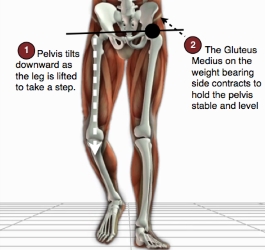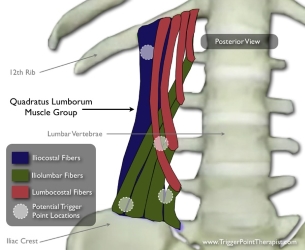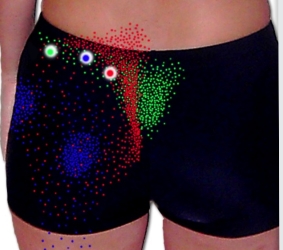Sciatica and lower back pain in general can have many causes, some of them more serious than others. In most cases, massage can provide significant relief from muscle tension or inflammation.
Table Of Contents
What Is Sciatica And Lower Back Pain?
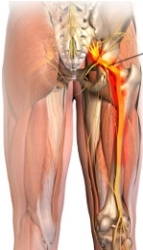
Sciatica is pain in your lower back and leg that is the result of pressure on your sciatic nerve. This runs from your hip down the back of each leg as far as your foot. It activates and supplies sensation to the muscles in the pelvis, legs and feet. As a slipped disc could be the underlying cause of your sciatica, a visit to your doctor as soon as possible is advisable. But it could be the result of tight muscles in your lower back, glutes or your leg. These can become inflamed and press on your sciatic nerve, which can cause chronic, long-term pain if left untreated.
Sciatica is a condition which involves pressure on your sciatic nerve, but isn’t necessarily related to general lower back pain. Tightness in your hips or lower back, or a weakness on one side of your back, can often lead to lower back pain. This is typically ongoing and uncomfortable yet bearable. However it can flare up into a debilitating injury from something as simple as bending down to tie your shoelaces.
Symptoms Of Sciatica And Lower Back Pain
Depending on the original cause of your pain, there are a variety of symptoms you could have. You might feel one or more of the following, or your symptoms could change. For example, it can be quite mild and have very little effect on your life, or it can be so severe you are unable to do everyday tasks. It might come on gradually and get worse over time, or it might be sudden and intense.
Also the way people experience sciatica and lower back pain can vary considerably. It might be a dull ache that you only feel in your lower back, or it might feel more like a burning sensation that can extend to the back of your legs or even your feet. You might have muscle spasms and tightness in your lower back, upper back or hips, and you might only feel pain after prolonged sitting or prolonged standing (1).
Is It Sciatica Or Lower Back Pain
Sciatica and lower back pain are not the same, though they can have similar causes. Unlike lower back pain, sciatica uniquely transmits its characteristic pain down the leg and foot, even though both can originate in the lumbar spine. The difference is, a muscle spasm in the lower back can cause back pain, but only if the muscle presses on or impinges the sciatic nerve will it cause sciatica. Sciatica can also result in leg tingling, numbness or weakness that can cause your leg to give way when you are standing. Sciatica pain usually affects one leg and is more burning or sharp compared to a dull ache or throb.
The specific location of the sciatic nerve compression determines the symptoms you experience. L4 issues usually cause problems with your thigh and you might feel weakness when straightening your leg. L5 issues can go as far as your big toe. They can also cause numbness on top of your foot, especially between your big toe and second toe. S1 issues are more likely on the outside of your foot and little toes. You might also have weakness when trying to stand on your tiptoes.
Common Causes Of Sciatica And Lower Back Pain
Sciatica and lower back pain that does not involve your sciatic nerve generally have the same causes:
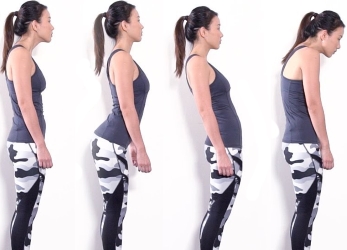
Poor Posture
Whatever the cause of poor posture the result is weakened, tight muscles or muscles doing work they’re not designed for. For example, tight muscles on one side means that the other side has to do extra work. This can increase the chances of a strain on either side.
Heavy Or Awkward Lifting
Heavy lifting, or lifting in awkward ways, can put stress on areas already susceptible to injury. Bending forward at the waist and twisting to pick something up with one hand is an example of awkward lifting.
Sitting For Long Periods
If your job involves a lot of sitting, many muscles will become shortened and weak. The most affected areas are usually the hip flexors and hamstrings. In turn this prevents the hips being in their correct position which puts pressure on the lower back.
Being Overweight
The more overweight you are the more likely you are to have poor posture and the more stress there is on your back. This can cause chronic lower back pain and lead to a slipped disc or sciatica.
How Massage Can Help Sciatica And Lower Back Pain
Most causes of sciatica and lower back pain can be relieved by sports massage from a massage therapist(2). If the cause is a slipped disc, your muscles can become inflamed and further press on the sciatic nerve. This can be close to the injury or further down your back or your leg. If the cause is poor posture, whether from being overweight, awkward movements at work or prolonged sitting, sports massage can loosen tight muscles. This allows them to work correctly and be strengthened evenly on both sides so there are no imbalances. Sports massage can also reduce muscle spasms and increase blood flow which speeds up the healing process.
Book A Mobile Massage
If you would like to book a mobile massage in York please contact me on 07713 250352 or email david@massageinyork.co.uk. Includes sports massage, deep tissue massage and Swedish massage. For more information on booking click here

